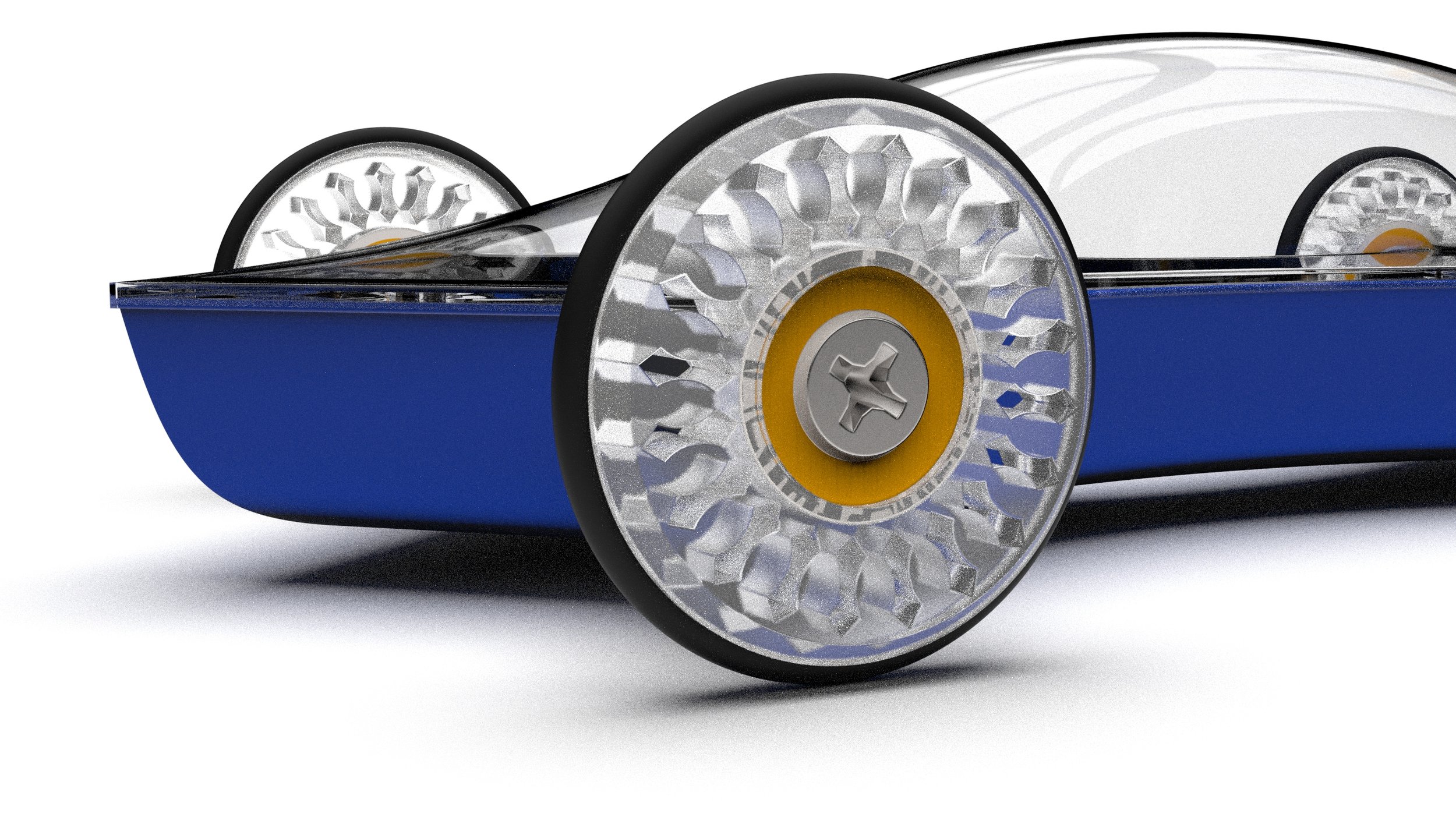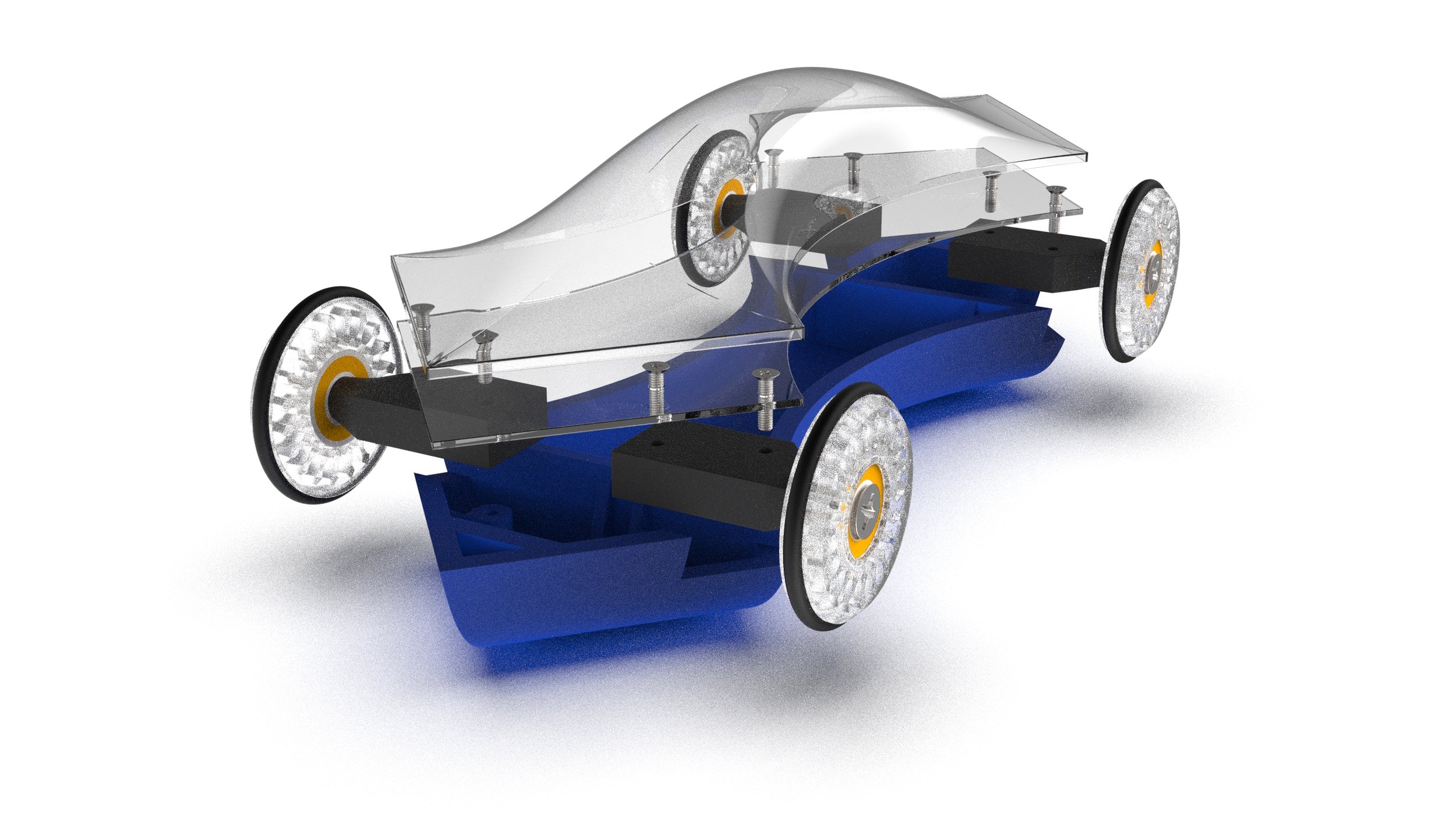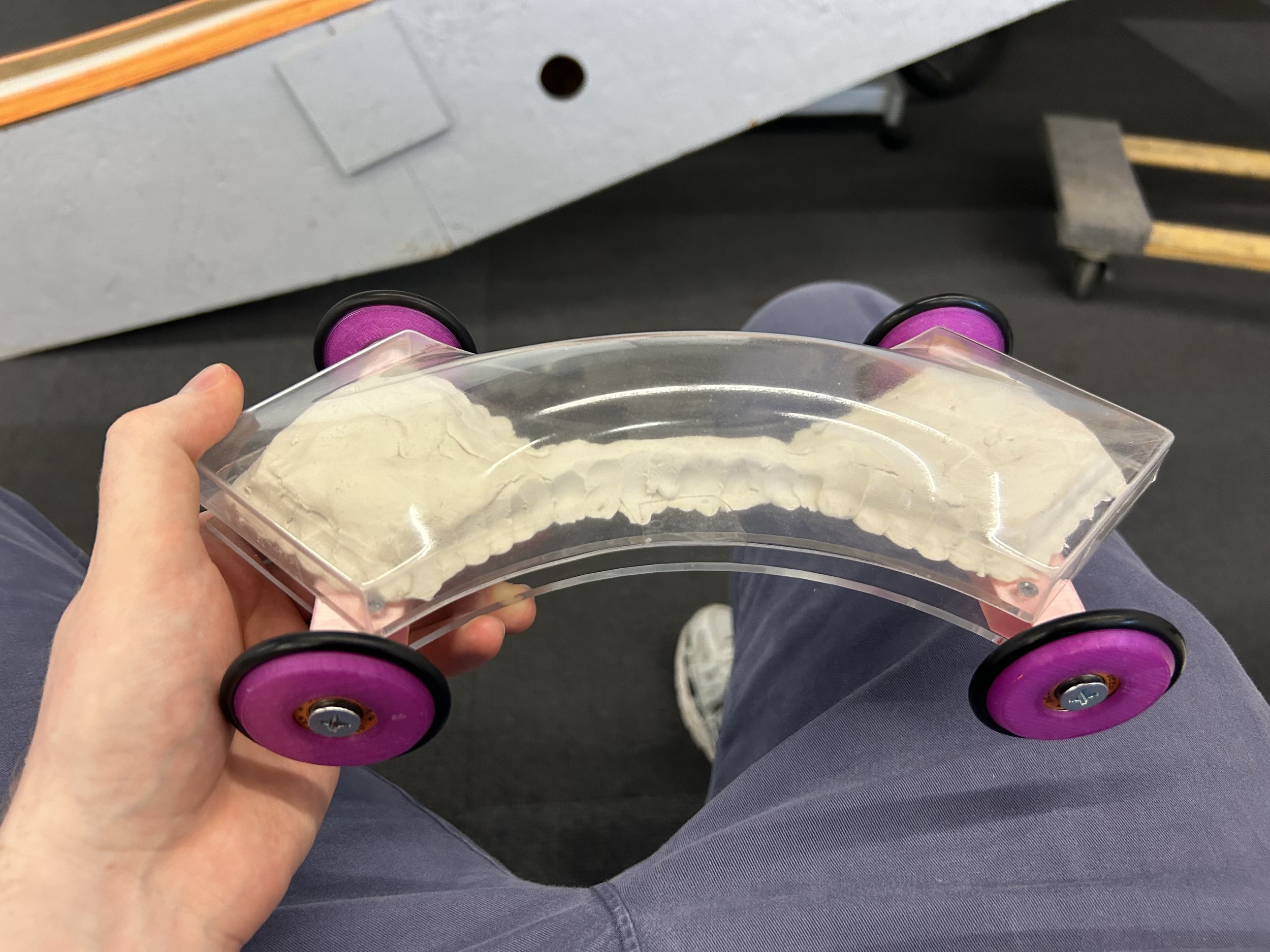
The Ramp Race
The yearly SUIID Ramp Race asks juniors to use CAD modeling and fabrication skills to produce a race car that will compete in the events of: Vertical Jump Height (how high the car reaches when flying off the ramp), Accuracy (ability of the car to stop exactly on the target), Construction, and Style.
The car is required to contain at least one component that is vacuum-formed from a CNC-fabricated model, one laser-cut component, and also be less than ____ pounds and within the dimensions of _______.

Design Goals
Having awaited the Ramp Race for years at SU, I had strong ideas of what I wanted my car design to accomplish
Visually interesting - deviating in form from the templates/example materials
Tuned for performance - aerodynamic, form following function
Intentional/Thoughtful Design - every part added onto the car is thoughtfully implemented and not tacked on

Gathering Knowledge
Here’s what I learned from questioning senior students and tracking down past projects:
Have a top that is able to pop off on impact (past examples used magnets) - it will take the impact force during a crash and will allow for easier access to alter and repair the vehicle
Creating some sort of structural brace will prevent joined parts from wobbling and messing with alignment.

References
Design Philosophy for Final Design
Reduction (for weight and aerodynamic profile)
Limit height above the wheel axles. Distance between the axles and the ground is fixed, working within that space.
This is not a real car. The middle of the car can be very skinny because nothing is housed there.
Aerodynamics
Maximize downforce by maximizing flat surface area. The widest part of the car is between the wheels.
The underbody should be flat on the bottom, but slope towards a point like the hull of a ship to cut through the air.
Weight System
Weight system should be contained within a structural brace for security
Weights should be easily accessible and customizable/adjustable


The Test Race
Putting together a quick prototype of the car concept for testing, I did not yet have the underbody component finished, and instead used the templated body structure of two acrylic plates, but with my custom-shaped plates instead. To test the car with weight, BBs were secured inside on top of the acrylic in a pocket formed by plasticine.

Re-designs
Underbody was made in two parts with a joining component for easier gluing. This was a result of not having a 3D printer with a big enough bed to print it in one piece.
Weight system had been originally designed for BBs. During testing, it was discovered that the BBs were interfering with mounting the acrylic plate onto the underbody. This resulted in BBs having to be removed, giving the BBs room to move around while the car was in motion. This motion pulled back on the car when it attempted to go up the counter-ramp. As a last minute fix, the BBs were replaced with metal bars, which were cut to fit into the underbody, mostly fixing the issue of movement.

Outcome
The car was awarded Best Construction
The car did not end up being as fast as anticipated. This can be attributed to a rushed job degreasing and re-lubricating ball bearings prior to the race, which would have significantly improved speed.
No parts of the car broke, were damaged, or failed during the race.

What I Would Do Differently
Primarily: I would produce a full prototype faster for performance testing, allowing me to troubleshoot performance issues further in advance of the race.
As a result, I would have reworked the weight system
Either designing to better accommodate the BBs, or instead pivoting to using the metal rods
Focusing the weight system design on weighting primarily the rear of the vehicle, possibly scrapping symmetrical design.



